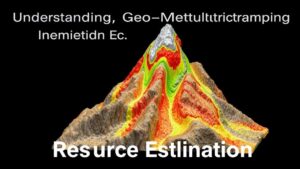How the Greeks and Romans Used Water Wheels for Ore Crushing
How the Greeks and Romans Used Water Wheels for Ore Crushing
Water wheels played a significant role in the ancient engineering practices of Greece and Rome, particularly in the mining industry. These innovations allowed civilizations to harness hydropower efficiently, especially for the purpose of ore crushing, which was a crucial step in the extraction of metals. This article explores the design, utilization, and historical significance of water wheels in ore processing during antiquity.
The Design of Water Wheels
The concept of a water wheel dates back to at least the 3rd century BCE, with two main types emerging: the undershot wheel and the overshot wheel. Both types were designed to convert the kinetic energy of flowing water into mechanical power.
- Undershot Wheel: This design featured blades that were struck by the flow of water at the bottom. It was effective in areas with consistent water flow and minimal elevation difference.
- Overshot Wheel: In contrast, the overshot wheel was positioned so that water fell on the blades from above. This design maximized energy conversion, making it suitable for regions with greater elevation differences.
Both types of wheels were typically constructed from timber, with the size and capacity of the wheel determined by the specific mining operations and available water sources.
Mechanics of Ore Crushing
The primary function of these water wheels in mining operations was ore crushing, which involved the breaking down of ore into smaller, more manageable pieces for extraction of valuable metals such as gold, silver, and copper. mechanical power generated by the turning wheels was transferred to a crushing device, often made of stone or metal.
- Crushing Stones: These were large stones that ground the ore into a fine powder, making it easier to separate valuable metals through methods such as gravity separation or panning.
- Stamp Mills: Or early crushing machines, were sometimes powered by the water wheel where heavy stones were dropped onto the ore, creating finer fragments necessary for processing.
This mechanization significantly enhanced productivity, allowing miners to process larger quantities of ore compared to manual methods.
Historical Examples
In the ancient Greek mining town of Laurium, known for its silver mines, water wheels were essential for exploiting the rich mineral deposits effectively. Historical accounts suggest that these wheels could crush several tons of ore daily, showcasing their efficiency and importance.
Similarly, in Roman territories such as Spain and Gaul, archaeological findings have uncovered remnants of water wheels linked to mining operations. The Romans capitalized on their extensive aqueduct systems to supply water to these wheels, demonstrating advanced engineering and resource management skills.
Impact on Mining Efficiency
Before the advent of water-powered mechanisms, ore processing relied heavily on human and animal labor, which was time-consuming and limited in output. introduction of water wheels represented a transformative period in mining history:
- Increased Output: Estimates suggest productivity doubled or tripled due to water-powered systems.
- Cost Reduction: The decreased reliance on human labor lowered operational costs, allowing for increased profit margins.
Also, the ability to process larger amounts of ore led to the more significant extraction of precious metals, which in turn stimulated economic growth and trade across the Mediterranean region.
Challenges and Limitations
Despite their advantages, the use of water wheels for ore crushing had limitations. The reliance on waterways meant that their effectiveness was contingent upon seasonal water availability. In arid regions or during drought periods, mining operations could suffer.
Also, maintenance of the wooden structures over time posed challenges, as decay and wear could diminish efficiency. Nonetheless, the benefits of water wheels in mining greatly outweighed these issues during their era of use.
Conclusion and Modern Applications
The innovations of the Greeks and Romans in utilizing water wheels for ore crushing stand as a testament to their engineering prowess and understanding of mechanical energy. These ancient practices laid the groundwork for future advancements in mining technology.
Today, while modern mining operations employ electric and fossil fuel-powered machinery, the principles discovered by earlier civilizations endure. Understanding the functioning of water wheels not only illuminates historical practices but also inspires contemporary renewable energy solutions.
In summary, the ancient utilization of water wheels for ore crushing not only revolutionized mining but also established a legacy of combining natural resources with mechanical efficiency that continues to influence modern engineering approaches.

